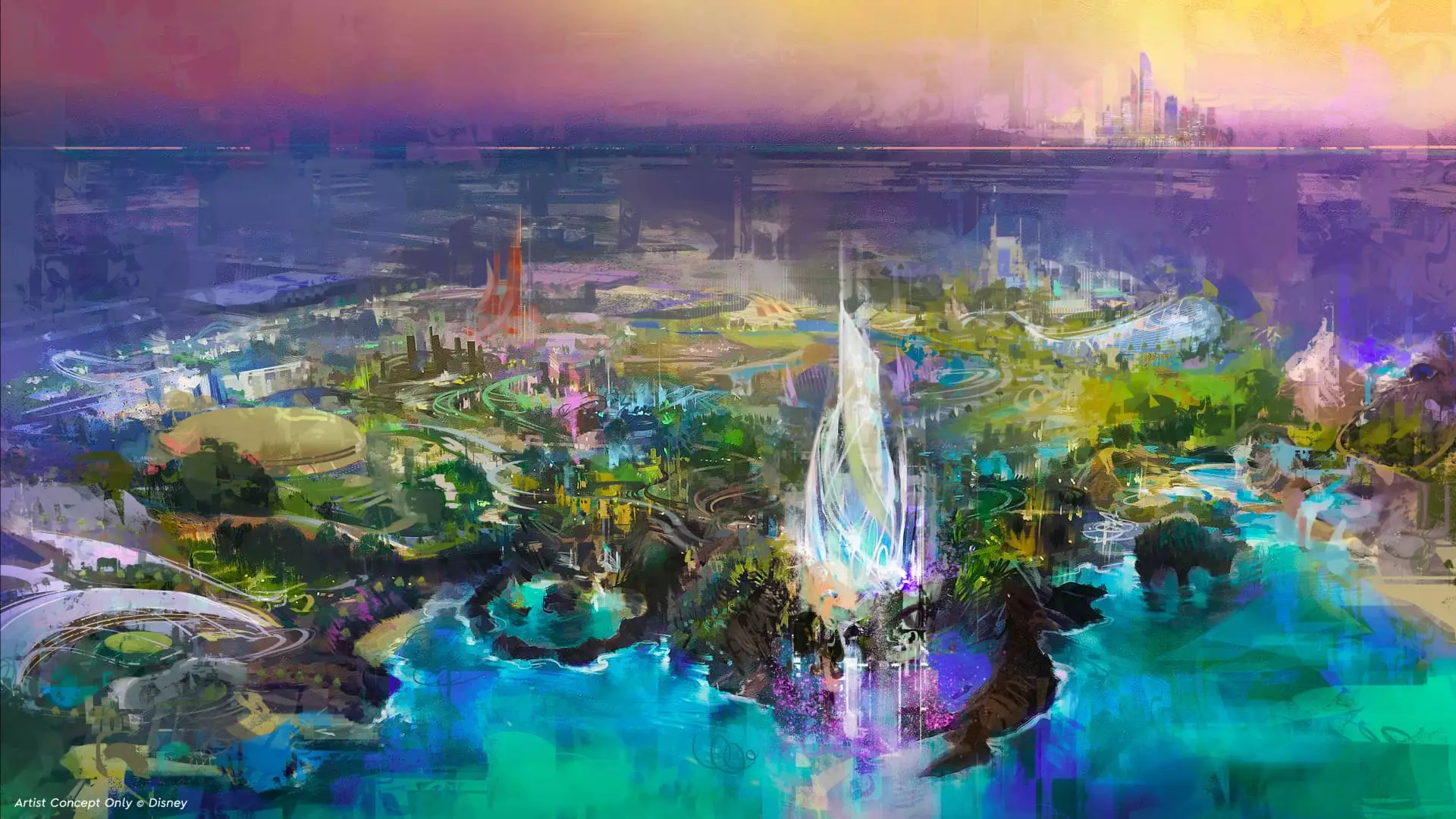Disney’s impending theme park project in Abu Dhabi represents not just another feather in the cap for the entertainment juggernaut but also signals a pivotal moment in the global entertainment landscape. This development, heralded by a partnership with the immersive destination company Miral, threatens to redefine family entertainment while raising important questions about cultural influence, commercialization, and regional identity.
The Unexpected Venue for a Disney Park
The decision to launch Disney’s seventh theme park in Abu Dhabi strikes many as somewhat unconventional. Known for its storied locations mainly in the United States and Asia, this move serves as a clear signal of Disney’s growing interest in markets beyond its traditional strongholds. As CEO Bob Iger remarked, the UAE not only has a rich cultural heritage but also a rapidly expanding economy hungry for global brands. One might argue that this choice looks less like an experiment and more like a calculated step towards global adaptability.
In many ways, this initiative reflects a deeper intention: to tap into a region that houses approximately one-third of the world’s population within a four-hour flight. The market is substantial, with around 500 million potential tourists within reach. In a sense, it’s almost a neocolonial approach to cultural expansion. By planting its flag in the Middle East, Disney could be seen as seeking to dominate another sacred ground of cultural storytelling. Unfortunately, one has to wonder at what cost does this come to local traditions?
Capital Dynamics: A Risky Business Model
Importantly, Disney will not be pouring capital into the park; rather, it will rely on a royalty-based system whereby it reaps profits without assuming developmental risks. This delineation could appear questionable. For a company like Disney—known for its hands-on approach to creative endeavors—the decision to step back and let others carry the financial burden seems contradictory to its core business ethos. Is this a sign of shrewd corporate strategy, or an indication of hesitation in an uncertain economic climate?
In an era defined by increasing scrutiny on corporate exploitation, this capital-light approach raises a variety of concerns. If profits come at the expense of local employment and genuine cultural representation, the excitement surrounding this park could only feed resentment among local populations.
Creativity or Commercialization? The Battle Within
Disney’s assertion that its park will blend “contemporary architecture with cutting-edge technology” is hard to dismiss, yet one might also wonder if such a focus betrays a heavy commercialization of creativity. The promise of an “interactive destination” leaves the door open for a park that’s more interested in tech-driven spectacles than in storytelling. Are we moving toward an entertainment model that prioritizes gimmickry over emotional engagement?
As Disney imagines ways to engage visitors, let’s be honest—how often does the overarching commercial agenda overshadow genuine artistic expression? The potential for a park filled with glitzy attractions but lacking substance looms large. More than ever, we must advocate for an experience that deeply resonates with human emotions, not just a collection of tech-infused ride experiences.
The New Frontier of Cultural Exchange
Nevertheless, there are considerable opportunities for meaningful cultural exchange. Disney’s entry into the Abu Dhabi market could catalyze a new dialogue between Western entertainment culture and local traditions. The artistic community in the UAE could benefit from Disney’s expansive resources and networks, giving rise to collaborative projects that honor local artistry while incorporating Disney’s rich storytelling traditions.
However, one should remain cautious. Each new cultural encounter comes with its set of challenges and compromises. What if Disney’s portrayal of local culture leans more towards approximations than authentic representations? If the only takeaway for visitors is a superficial experience of Abu Dhabi filtered through an American lens, then we risk losing the very essence of what makes the region unique.
Entertainment Localization and its Significance
As the park takes shape, the emphasis will be on creating themed accommodations and a unique retail experience that integrates the culture of the UAE with Disney’s storytelling heritage. This localization of entertainment might have the potential to mirror successful models in other countries, yet it raises valid questions about appropriation versus appreciation.
Josh D’Amaro, Disney’s experiences chairman, talks of a transformative experience, but how realistic is his vision when juxtaposed against the grandiosity often associated with Disney parks? The challenge will be finding that fine line between creating a unique, localized experience while avoiding a homogenized one that could render the essence of Abu Dhabi a mere backdrop for Western narratives.
Disney’s foray into Abu Dhabi offers a moment of enormous potential, but it comes bundled with associated risks and philosophical dilemmas. As construction begins on Yas Island, the world will be watching closely to see whether this ambitious project becomes a hallmark of cultural dialogue or merely another instance of entertainment imperialism.

